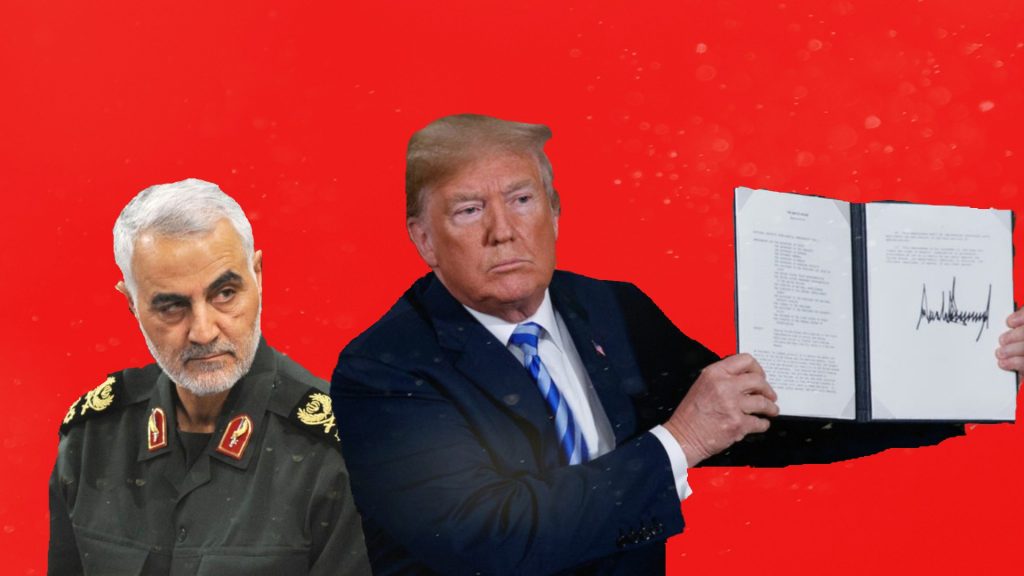On January 3, 2020, Iranian general Qasem Soleimani, the second-most powerful individual in Iran, was assassinated at the Baghdad International Airport in Iraq. Soleimani was a widely respected figure in Iran and seen as a celebrity around the Middle East. At the time of his death, he was the commander of the Quds Force, a division of the Iranian military responsible for extraterritorial military and clandestine operations.
Specifically, Soleimani was the chief architect of Iran’s campaign to extend their power within the Middle East. This was done—not through diplomacy, soft power, or military invasion—but through funding and building a network of paramilitary and militia fighters all throughout the Middle East.
According to Iranian-American scholar Ray Takeyh, “Soleimani understood that Persians would not be willing to die in distant battlefields for the sake of Arabs, so he focused on recruiting Arabs and Afghans as an auxiliary force. He often boasted that he could create a militia in little time and deploy it against Iran’s various enemies.”
Soleimani was Iran’s expert on getting “non-state actors” to ally with Iranian interests. In the Middle East, “non-state actors,” including groups of militias, religious groups, and tribal forces, hold power in most of the region. The Wednesday before Soleimani was killed, he had just traveled to Syria and Lebanon. On Thursday, he left Lebanon for Iraq. When Soilemani arrived in Baghdad, he was gunned down by two Reaper Drones.
Non-state actors have grown vastly in importance in the past 20 years, and Soleimani used them to advance Iran’s foreign policy goals. According to Hassan Hassan, a director of the non-state actors program at the Center for Global Policy in Washington DC, “Today, the total number of Sunni Islamist militants is estimated to be nearly four times what it was on September 11, 2001; there are 50,000 to 85,000 militants in Syria and Iraq alone.”
For most people in the United States, who view foreign policy as Putin vs. Trump or North Korea vs. the United States, the Middle East is a confounding place. In parts of the region, governments hold little or no control beyond certain areas. Over the past four decades, almost every institution has been transformed in ways that weaken the traditional system of state power.
Soleimani’s efforts to build a network of Iranian militias worked extremely effectively. Takeyh writes that, in recent years “Soleimani began expanding Iran’s imperial frontiers. For the first time in its history, Iran became a true regional power, stretching its influence from the banks of the Mediterranean to the Persian Gulf.”
Soleimani’s killing was no surprise. He was a flashy figure who operated in the open whenever he visited other countries in the Middle East. American officials were tracking his every move before they killed him with a drone strike. Both presidents Bush and Obama had chances to kill Soleimani but declined to given the turmoil that killing Soleimani would have caused. In 2008, Soleimani texted David Petraeus, the U.S. military commander in Iraq at the time, to boast that Iran was outwitting the Americans in Iraq.
Killing Soleimani may seem like no problem. After all, he sponsored militias in foreign nations, often sparring with U.S. interests and leading to the deaths of U.S. soldiers and contractors. He operated in the open and the U.S. could take him out with a drone strike without a huge on-the-ground operation.
That may seem like an easy decision, but there are many long-standing consequences to killing Soleimani, even though it seems like a war with Iran has been averted.
The American siege against ISIS has been put on hold, arguably our most successful and popular military endeavor in the last twenty years.
Iran finally pulled out of the nuclear deal, something that they had neglected to do even after Trump pulled out almost 18 months ago. According to New York Times Opinion Columnist Nicholas Kristof, Iran “is now potentially within five months of having enough fuel for a nuclear warhead, down from almost 15 years when Trump took office.”
United States forces may be pushed out of Iraq, and even if they don’t have to leave, there will be Iraqi distrust of the United States (both from Iraqi politicians and citizens). The Iraqi media narrative has shifted overnight from Iranian interference in Iraq to America assassinating a foreign official on Iraqi soil.
With the assassination of General Soleimani, Iranians put away their divisions and coalesced behind their government. In recent months, ordinary Iranians have been speaking out against the government in the face of rising oil prices. Although Iranians may disagree with their government, there are also limits to that. The majority of Iranians see the assassination of Soleimani as a threat to the sovereignty of Iran.
This is not an exhaustive list of the consequences. The United States declined to alert many of our closest allies about this attack, and the administration had no clear strategy behind carrying it out. There are also indications that Trump carried out this attack to help his chances in the 2020 election. Although this attack could be a political “win” for Trump and definitely succeeded in distracting from impeachment, foreign affairs is not a zero sum game.
Aaron Friedman
News Columnist
Graphic: Ryan Rhew

